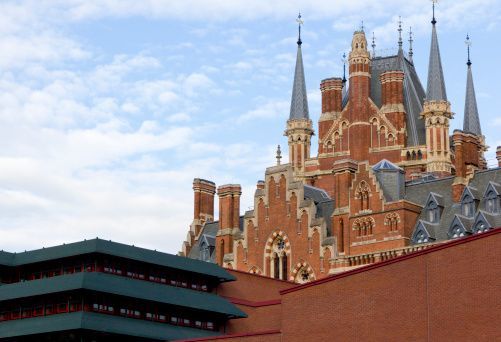
The British LibraryImage:Getty Images
A New Home for Old Books—and More!
The British Library experience is like opening a book whose cover gives no hint of the story within. Nothing about the sprawling, massive facade of the building prepares the visitor for the intimate atmosphere created by the multilevel interiors of diverse construction materials and colors.
Read more: First look at the renovated Buckingham Palace
Architect Colin St. John Wilson’s building was controversial and criticized when it was completed in 1997 and officially opened by Queen Elizabeth in 1998, but today it has settled comfortably into its corner location on the busy Euston Road, with St. Pancras and King’s Cross train stations just footsteps away. The library has been a catalyst for gentrification in this London neighborhood.
Step inside the doors
While the British Library was only officially established in 1973 by an Act of Parliament, its foundation, as part of the British Museum in Bloomsbury, has been in existence for more than 250 years. Sir Hans Sloane, a prominent London physician in the early part of the 18th century, established the museum, with a library, in his will.
Almost immediately various collections were acquired by the museum’s library, and in 1755 it was necessary for its governing body to stipulate that seven librarians should be part of the 15-member staff. Today, more than 1,200 people work at the British Library building.
The British Museum expanded over the centuries, and it became obvious in the 1970s that the library would need a building of its own. St. John Wilson first came up with a plan for a new structure next to the museum. However, local opposition to a building of the size proposed made it clear that the library would need to move elsewhere, and the site on Euston Road was selected.
Upon entering the library, one encounters a space that expands in both height and width on different levels. Materials from the outside, the red bricks for instance, flow into the building and the reception area. There is a large bronze book called “Sitting on History” that is also a bench on which to rest. A statue of William Shakespeare leaning against a lectern is at the foot of the stairs leading to the next level. Walk up the steps and a huge, colorful tapestry commemorating the tragedy and beauty of the 20th century hangs at the top.
More than 16,000 people enter the British Library each day to use its collection of 150 million items. They find within an interesting building that offers different surfaces on which to sit, various balconies from which to look out, and short flights of steps leading up and down to other levels.
The 60,000-volume King’s Library of George III soars upward to a height of six floors in its impressive bronze and glass cases, and it continues to be a collection that is very much in use. A librarian can often be seen crossing the little drawbridge leading into the cases to remove a book for a reader.
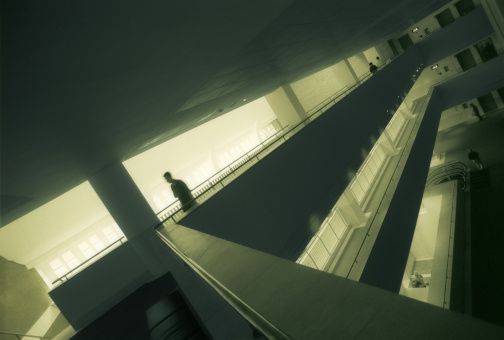
The British Library
Read more: A day to visit Ely
The Magna Carta
Many treasures can be found within the British Library, including two originals of the Magna Carta, two copies of the Gutenberg Bible (the earliest book printed in movable type and dating to about 1454) and the 1623 First Folio of Shakespeare’s plays. There is a copy of Handel’s well-known oratorio Messiah, written in his own hand in 1741, as well as an entire case devoted to the music and films of the Beatles.
The lower level offers changing exhibitions. From November 18 through March 2007 an exhibition titled “London in Maps: Life Story of a City” will illustrate how the image of London has evolved over nearly 2,000 years.
Poetry readings, with celebrity readers, and lectures are held regularly for the public in the library’s Conference Center for a nominal fee. The well-stocked gift shop is just the place to find tasteful and unique presents, while several restaurants, including a café in the piazza, are scattered throughout.
Read more: 7 Top tips for visiting Britain
The Reading Rooms
Of course, the heart of the British Library has to be its reading rooms. While different types of stone and brick are used in the building’s open areas, the reading rooms have carpets and wood, creating a quieter atmosphere. While some may mourn the loss of the glorious dome-ceiling Reading Room of the library when it was housed within the British Museum, today’s building has 11 modern, user-friendly rooms for readers.
The largest of these rooms is the Maps Reading Room; the Map Library, the second largest in the world, after the U.S. Library of Congress, contains more than 4.25 million atlases, maps, globes and books dating from the 15th century.
The British Library actually has three components. The headquarters on the Euston Road contains its reading rooms and exhibition galleries; Colindale, in north London, houses its newspaper reading rooms; and Boston Spa in Yorkshire is the home of its document supply service. In its ongoing efforts to keep up with changing times, the British Library is setting up the National Digital Library at its central London base to store e-journals, Web sites and other digital items.
It is quite remarkable that anyone may use all the resources of the British Library free of charge simply by applying for a photo I.D. card on the ground-floor level. A pass allows access to all the incredible resources of this magical place. It would take a person 80,000 years to see the entire collection of the British Library if five items were selected each day.
Some 16,000 people a day use the extraordinary collections and visit the exhibition galleries of the British Library in their state-of-the-art premises next door to London’s St. Pancras Station.
Reading Room 
Read more: Rambling in the Lake District
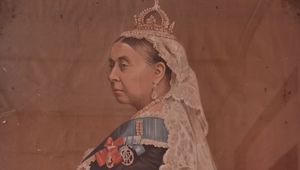

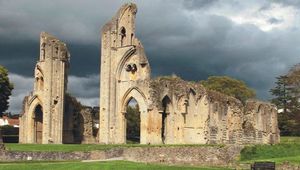

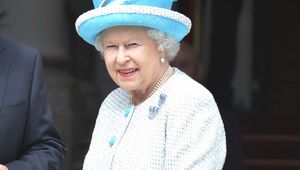
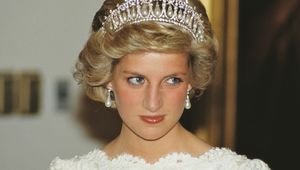
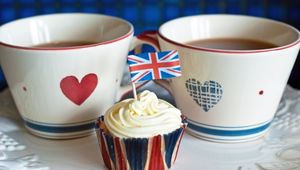



Comments